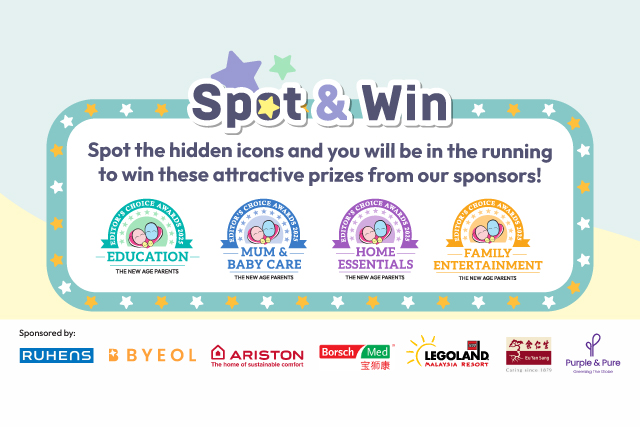 When my son, Vee, was about 14 months old, I decided to start weaning him off breastmilk – the perfect and best milk for human beings. The main reason is that his regular suckling day AND night is doing too well in child-spacing.
When my son, Vee, was about 14 months old, I decided to start weaning him off breastmilk – the perfect and best milk for human beings. The main reason is that his regular suckling day AND night is doing too well in child-spacing.
Weaning off breastmilk means I needed to search for an alternative toddler’s milk source for him, amongst the huge variety of milk available in the market. Since all mothers would need to go through a similar thought process when weaning the toddler off breast milk or after he outgrows infant formula, this article shall share with you six important considerations.
1. How Much Milk to Drink?
My son was breastfed latching on exclusively (except for the odd occasion) on demand, so I had no idea how much milk he drank. These are what I found out:
- His paediatrician mentioned 500 to 600ml of dairy products per day is sufficient after one year old, mainly for the calcium.
- Calcium intake recommended in the U.S. for children 1 to 3 years old is 500mg per day (Source: AAP Policy)
- 240ml of milk or 240mg of yoghurt provides about 300mg of calcium (Source: AAP Policy)
- “Unless advised otherwise by your baby’s doctor, limit your toddler’s cow milk intake to no more than 24 ounces a day.” and “excessive milk consumption is a common cause of iron deficiency anemia in toddlers” (Source: AskDrSears.com
Too little milk may mean lack of calcium and fat, while too much milk could affect the child’s appetite for other nutritious solid foods. Therefore, a fine balance is needed.
As different brands of milk provide varying levels of nutrients, remember to check and compare the labels.
2. Whole Milk or Formula?
While formula milk is formulated to meet the nutritional needs of children, there are many exclusively breastfed babies and toddlers who do not accept its taste.
There are also mothers who are not convinced about feeding their children highly-processed food regularly, which is why they breastfeed in the first place. AskDrSears.com mentions “We do not recommend follow-up formulas that contain corn syrup. They are nutritionally unwise and unnecessary.”
On the other hand, whole milk is recommended only for children above 12 months old. This means infants should drink breastmilk and/or formula milk up to at least their first birthday.
As whole milk is not fortified with vitamins and minerals, a common concern is if it would provide sufficient nutrition for a growing toddler. Our home-visit nurse suggests supplementing whole milk with a multi-vitamin to ensure that the child receives all the necessary nutrients.
3. Milk from Cows, Goats or What?
Some mothers have mentioned that they feed their toddlers with goat’s milk or soy milk. After more Googling around, I found others who opt for oatmilk and rice milk (these are essentially health beverages, not really milk per se. Some interesting findings:
- Goat’s milk may be easier to digest and less allergenic than cow’s milk. (Source: AskDrSears.com)
- “Milk alternative beverages not containing appropriate quantities of protein and/or vitamins and minerals for toddlers should carry a warning label as to their inappropriateness for this age group.” (Source: Severe Nutritional Deficiencies in Toddlers Resulting From Health Food Milk Alternatives, PEDIATRICS Vol. 107 No. 4 April 2001, p. e46)
Even though goat’s milk may have slight benefits over cow’s milk, it is less common in the market. Some children, such as my son, are allergic to soy, so they have one option less to choose for toddler’s milk.
⇒ Related Read: The Baa’s And Moo’s Of Milk
4. Organic or Non-Organic?
Organic milk is an attractive option because the manufacturers commonly avoid the use of pesticides, hormones, genetically modified organisms (GMO) and harmful chemicals in producing the milk.
After surveying two brands of organic whole milk, I realised that their prices are 2 to 3 times that of regular whole milk, which would not fit well into many families’ budget.
5. Cows: Pastured (Grass-Fed) or Confined (Grain-Fed)?
There are some people who are opposed to drinking milk from grain and corn-fed cows. In nature, cows are supposed to feed on fresh grass, instead of grains. Even organic milk may come from cows who are confined and fed on organic corn most of the time, depending on the relevant organic certification standard.
Usually, the animals’ diet is not disclosed on the milk package. To find out, it is necessary to read the manufacturer’s website or contact them directly.
6. Regular Pasteurised or UHT Milk?
Ever wondered why some milk are kept in the refrigerator while some are stored in room temperature for up to 6 months? These are two useful terms to know:
- High Temperature Short Time (HTST) or Flash Pasteurisation: The liquid moves in a controlled, continuous flow while subjected to temperatures of 71.5 °C (160 °F) to 74 °C (165 °F), for about 15 to 30 seconds.(Source: Wikipedia)
- Ultra High Temperature (UHT) Processing: partial sterilization of food by heating it for a short time, around 1 to 2 seconds, at a temperature exceeding 135°C (275°F), which is the temperature required to kill spores in milk. (Source: Wikipedia)
Regular pasteurised milk usually costs more than UHT milk. Is UHT milk is good enough?
Apparently, a study by Carbonaro (2000) concludes that “the in vitro digestibility of proteins in UHT treated milk was significantly impaired compared to pasteurized milk.” Furthermore, AlKanhal (2001) concluded that “this reduction in nutritional quality might be significant for children who are solely dependent on this type of milk in their diet.” (Source: The Effect of Heat Treatment on the Nutritional Value of Milk, Erin Gillis, September 1, 2005)
It seems that regular pasteurised milk maintains more nutritional integrity than UHT milk.
There is a wide array of alternative milk available for toddlers and the ultimate choice depends on balancing your child’s nutritional needs, family budget and special circumstances such as allergies. Hope this article would ease your search for the ideal toddler’s milk.
About the Writer
MieVee is a Stay-At-Home-Mum with a 19-month old son, Vee. She supports breastfeeding, cloth-diapering, babywearing and green living. Her website, MummysReviews.com, aims to help parents make smart purchases and organises regular giveaways.
* * * * *
Like what you see here? Get parenting tips and stories straight to your inbox! Join our mailing list here.
Want to be heard 👂 and seen 👀 by over 100,000 parents in Singapore? We can help! Leave your contact here and we’ll be in touch.












































